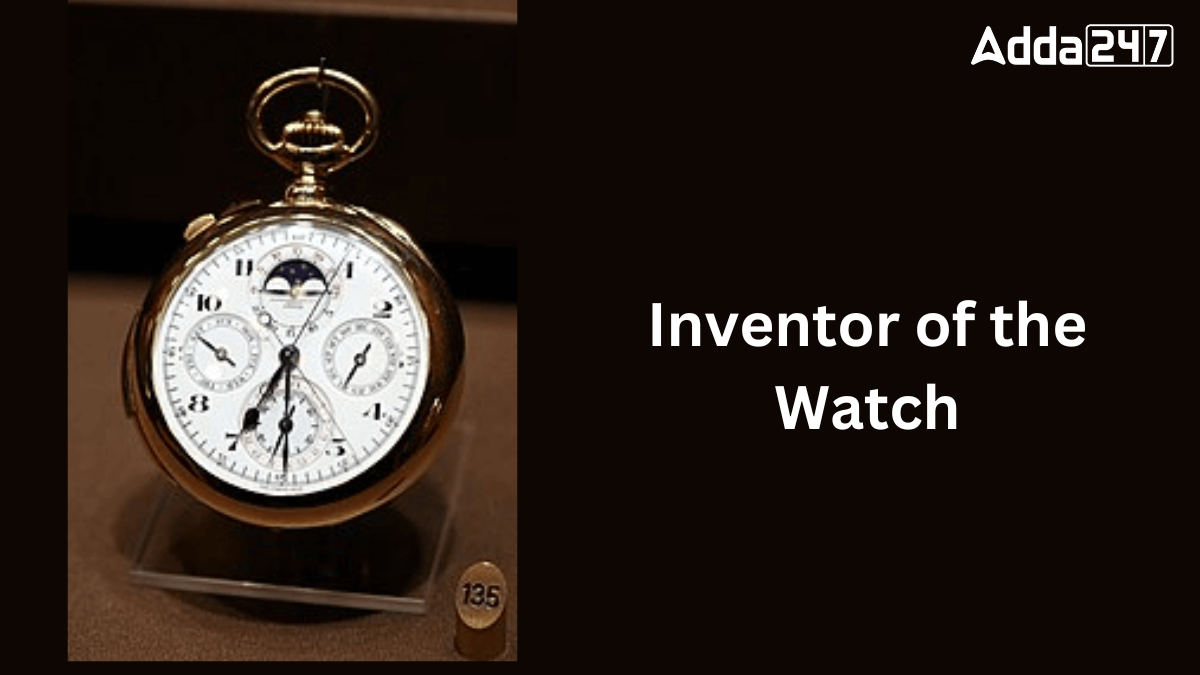A watch is a small, portable timepiece designed to be worn or carried. Watches and clocks come in various styles, including wristwatches, pocket watches, sundial watches, mechanical watches, and smartwatches. The German clockmaker Peter Henlein from Nuremberg is recognized as the father of the modern clock and the pioneer of the clock-making industry, having created his first clock in 1510.
What is a Watch?
A watch is a wearable, portable timekeeping device. It is designed to maintain a constant movement regardless of the wearer’s activities. Watches can be worn on the wrist or attached to a chain as pocket watches. Modern watches display time, date, month, and year, and often include features such as timers, chronographs, and alarms. Smartwatches have advanced functions like GPS, Bluetooth, and heart-rate monitoring.
Who Invented the Watch and When?
Peter Henlein, a clockmaker from Nuremberg, Germany, is credited with inventing the first watch in the early 16th century. His work in creating small, spring-driven clocks marked the beginning of the modern clock-making industry.
About the Inventor of the Watch
Peter Henlein, born in 1485, gained fame for his ability to craft small brass clocks with spring-driven mechanisms, which were rare and expensive at the time. By 1510, he had created his first clock, and by 1541, he had established a reputation for his skills, creating both small and large tower clocks for places like Lichtenau Castle. Despite the limitations in accuracy and portability of his designs, Henlein is considered the father of modern clocks.
History Related to the Invention of the Watch
- Circa 3,500 B.C.: Sundials were created to measure time more precisely, utilizing calendars to study the natural rhythm of daylight and night.
- 1400-1500: In 1485, Leonardo da Vinci drew an illustration of a fusee for a clock. Between 1504 and 1508, Peter Henlein created the first contemporary pocket watch. Early clock watches, worn as necklaces or attached to attire, were symbols of prestige for the wealthy.
- 1600-1700: The balance spring, created by Robert Hooke or Christiaan Huygens in 1657, improved watch accuracy. King Charles II of England invented the waistcoat in 1675. Daniel Quare created a repeating mechanism for watches in 1680 that played a bell sound every quarter hour. The minute hand, developed by Jost Burgi in 1577, was first used in Britain and France in 1680.
- 1700-1800: In 1704, Nicolas Facio, Jacob, and Peter Debaufre introduced the use of rubies in watch movements. Thomas Mudge created the lever escapement in 1759, later modified by Josiah Emery in 1785. Abraham Louis Perrelet invented the first self-winding mechanism in 1780.
- 1800-1900: Louis Brandt established his factory in La Chaux-de-Fonds, Switzerland, in 1848, marking a turning point for the watchmaking industry. Patek Philippe of Patek Philippe & Co. created the first wristwatch in 1868 and invented the chronograph, perpetual calendar, split-seconds hand, and minute repeater. Mass production of watches began in 1876, making them accessible to common workers. Constant Girard of Girard-Perregaux fame designed a wristwatch for German navy officers around 1880. Greenwich, England, was designated as the zero meridians (GMT +0) in 1884, becoming the international reference point for time zones.
- 1900-2000: In the early 1900s, wristwatches were seen as a fashion item for women, with men initially rejecting them as a fad. However, over time, wristwatches gained popularity among men as well.
- 2000-Present: The Timex Data Link 150, introduced in 1994, allowed users to send and receive data to and from a computer using an optical sensor. The Casio Wrist Camera, released in 2002, could take grayscale photographs with a 120 by 120-pixel resolution. Seiko introduced the first watch with an e-ink display in 2005. In 2011, Apple launched the Apple Watch Series 1, combining fashion and utility with features like messaging, caller ID, and health tracking. Digital wristwatches have since become increasingly popular.
Way Forward
Despite the shift towards digital technology, watches remain popular fashion items. Digital firms continue to enhance watches with longer battery life, more fashion components, and advanced features like health tracking and communication, influencing the accessory market.




 Which River is known as the Silver River...
Which River is known as the Silver River...
 Who was the First Male Pilot in India? K...
Who was the First Male Pilot in India? K...







